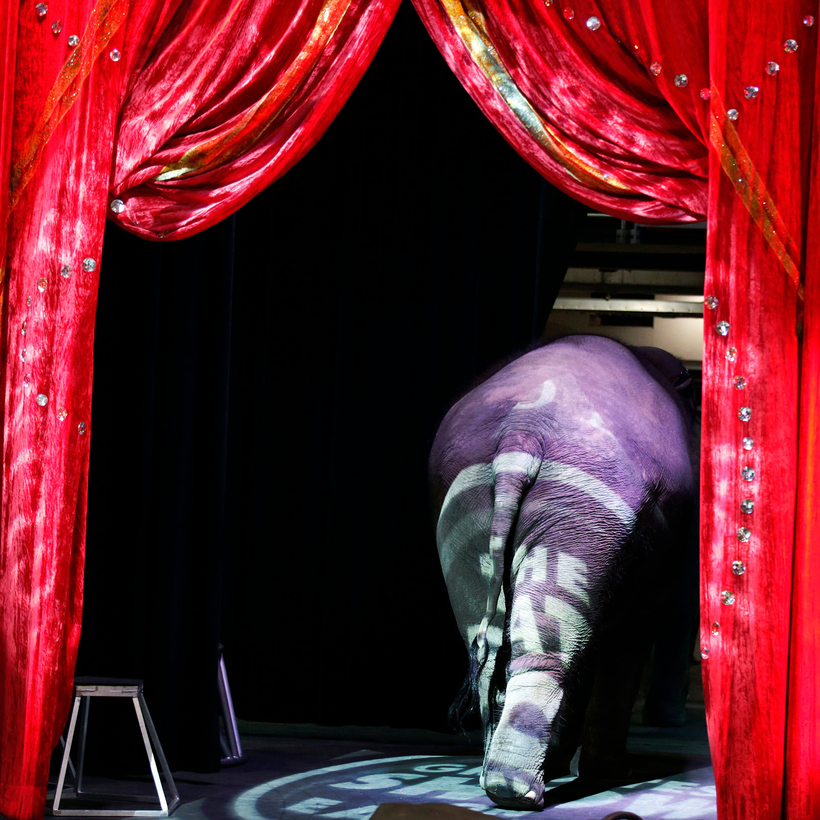In late May 2017, Ringling Bros. and Barnum & Bailey’s “Greatest Show on Earth,” heir to a circus created by P. T. Barnum 146 years before, turned its lights out for the final time. Those who missed news of the venerable circus’s closing can be forgiven. It came in the dizzying first months of the Trump presidency, with those scary stunts, clownish mishaps, and cast of freaks laying hourly claim to the world’s attention. Even the Greatest Show on Earth had a hard time breaking through.
But in the closing of the circus, the writer Les Standiford cleverly spotted the end of one of the great American showbiz stories. His book Battle for the Big Top: P.T. Barnum, James Bailey, John Ringling and the Death-Defying Saga of the American Circus is an entertaining business drama that places Barnum, Bailey, and Ringling in the pantheon of American media moguls.
Barnum, of course, steals the show. When he entered the circus business, in 1870, the showman was already a massive global celebrity, having wowed the public with outlandish curiosities such as “the Feejee Mermaid,” actually the carcass of a sturgeon-like fish with the torso of an orangutan sewed to its back. Lending his name and promotional acumen to a traveling show that used America’s expanding rail network, his Greatest Show on Earth quickly became the most famous circus in the world.
Barnum’s success was the envy of James Bailey, a canny circus entrepreneur. Bailey’s lucky break came in March of 1880 with the birth of “Little Columbia,” an Indian-elephant calf, said to be the first captive of the species born on American soil. Impressed, Barnum offered $100,000 for the calf. Bailey declined and raced to print flyers: “Come see what Barnum would pay a king’s ransom for!”
Tasting his own medicine, the pragmatic Barnum saw a worthy partner. In August of 1880, he and Bailey announced a merger of their interests, a kind of Warner Bros. Discovery for the big-top era.
On Top of the World
Like so many mega-mergers, Barnum and Bailey’s Greatest Show struggled under its own heft and suffered against scrappier competitors such as the earthy show founded by five of the seven Ringling brothers of Baraboo, Wisconsin. (Standiford quotes a Ringling descendant explaining their success: “Perhaps it wasn’t that the [brothers] were so smart, but just that there were just so Gad-damned many of them.”) In 1907, with Barnum and Bailey both dead, the Ringlings pursued a purchase of the Greatest Show on Earth, creating the combined enterprise that would dominate the circus world for much of the next century.
That show was always centered around elephants and other animals, and Standiford’s narrative contains haunting glimpses of their suffering. There is a vivid, appalling account of the demise of “Jumbo,” Barnum’s famed 13,000-pound African elephant, killed in a collision with a speeding locomotive in an Ontario rail yard in 1885.
Justice for Jumbo came in 2015 when, after years of hounding from animal-rights groups, the Greatest Show on Earth agreed to remove elephants from its act. Though circuses like the global juggernaut Cirque du Soleil had found a model for success in the YouTube era, Ringling Bros. and Barnum & Bailey cratered without its signature quadrupeds. Talking to reporters a few days before the Greatest Show’s final performance, in 2017, its ringmaster mourned the passing of “the last safe space” and “the last pure form of entertainment there is.”
“Pure” is not exactly the first word that comes to mind after reading about the things Barnum and the other circus gurus did to fill seats. Still, it’s worth mourning the death of any enterprise that embodied so many essential American qualities—hustle and self-promotion, showmanship, wonder and deceit. It’s not that hard to imagine a Greatest Show on Earth adapted for modern sensibilities—cruelty-free robotic elephants, anyone? Perhaps in the hands of an audacious 21st-century mogul, the big top could rise again.
Jonathan Darman is the author of Landslide: LBJ and Ronald Reagan at the Dawn of a New America and a forthcoming biography of Franklin Roosevelt


